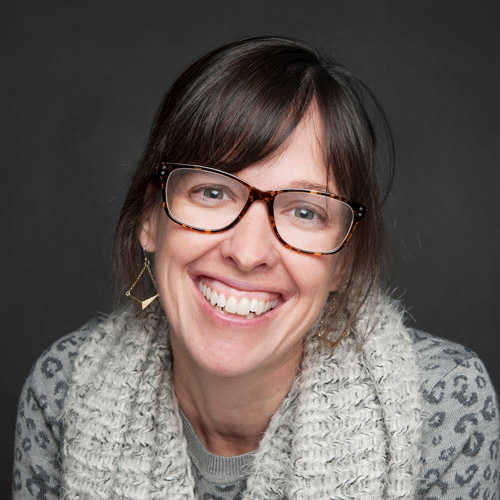U-Design, the College of Engineering’s Summer Program, Introduces Middle Schoolers to the World of STEM

Noble and Greenough student Caleigh Feng works on making a motor during a summer STEM program hosted by the College of Engineering on July 19, 2023.
U-Design, the College of Engineering’s Summer Program, Introduces Middle Schoolers to the World of STEM
ENG Diversity and Outreach team encourages the next generation of engineers
On a recent weekday morning at the Boston University Photonics Center, middle school students prepare the robots they’ve designed for a battle royale.
Layers of yellow and orange tape form a large rectangle on a classroom floor, setting the boundaries for this morning’s arena. The students line up their creations on the edges of the colorful battlefield.
And…GO! The robots start to whirr. Some speed towards the middle of the rectangle and crash into other robots. Others wander out of bounds. A couple of the robots buzz in place.
“I think I uploaded the wrong program,” one student says with a laugh.
Their creators cheer on the machines, realizing their own mistakes and announcing plans to fix them in real time. Once a victor—the last robot standing—is declared, the students get 20 minutes to reconfigure their machines before the next round.
This competition is part of the BU College of Engineering’s U-Design summer program, which brings middle school students to campus for a week to explore STEM concepts, inspire imaginations, and increase diversity in technological fields. Most important, it’s a lot of fun.
Michael Kelly, ENG’s STEM Outreach manager, says U-Design’s structure lets students get creative with their projects, so they can enjoy the process of learning. “There are no quizzes,” Kelly says. “We allow them to explore their imagination.”
When signing up, students can choose one of three U-Design workshops: Robo-Alley, for those interested in a battle royale, Flight School, which helps students custom-design model rockets and gliders, and Electrical & Mechanical Gizmos, which teaches the inner-workings of wire circuits and electromagnetism.
The Gizmos students started the week learning about the basics of electricity, circuits, and switches. Then they moved on to creating electronic locks for secret candy safes as well as electromagnets to make high-powered gumball dispensers. By Friday, they were building their own electric motors.
Casey Phalan, a Boston Public Schools middle school math teacher and a team leader overseeing the Gizmos workshop, says U-Design’s curriculum is accessible for all interested students, regardless of their existing STEM knowledge.
“You can come in with no previous experience in engineering [or] circuitry and jump right into it,” Phalan says. “All it takes is observation and excitement to try stuff out.”

Pamela Audeh, ENG assistant dean for outreach and diversity, says the program is designed to reach students who haven’t previously had the opportunity to explore engineering. “The idea is really to inspire the next generation of engineers, with a focus on diversity and diversifying the field of engineering in general,” she says.
To recruit its campers, U-Design offers scholarships for families that qualify for government assistance programs and reaches out to local Boston public schools, where oftentimes, organizers say, engineering isn’t a focus in the curriculum.
Liala Jama (CAS’26)—one of the BU students who mentored and helped out at U-Design this summer—participated in similar programs before coming to college. She says opportunities like U-Design help students from underrepresented backgrounds feel confident in engineering spaces. “It really starts with kids just knowing that they have a place in that world,” she says.
Organizers say that U-Design is part of ENG’s long-standing commitment to outreach and inclusion. During the school year, the college’s Technology Innovation Scholars Program (TISP) sends ENG undergraduates to elementary, middle, and high schools across the country to expand young students’ horizons and facilitate learning opportunities.
Anushka Rathi (ENG’23) has participated in both outreach programs and says seeing wider representation in STEM fields is super beneficial for young people.
“I love working with kids and seeing them get all these opportunities that I wish I had at their age,” Rathi says. “It’s really impactful to see people of color and women entering these spaces, because there’s a lack of that.”
Rathi is right. Women, Black, and Hispanic workers remain underrepresented in the STEM workforce, according to 2021 findings from the Pew Research Center. For instance, Hispanic workers make up 17 percent of total employment across all occupations, but just 8 percent of all STEM workers.
Kelly says addressing inequity in STEM fields like engineering can help address injustices in the larger world. “The main focus of our outreach is to make the engineers of tomorrow look more like how America is going to be. This helps combat things like systemic racism,” he says. “Old civil engineers put highways through Black and brown neighborhoods. If some of those engineers were Black and brown, they could have said, ‘No. I don’t think so.’”
Kelly and Phalan say ENG’s outreach coordinators are looking into more ways to provide outreach to local high school students. Kelly plans to propose options like bilingual classes, expanding scholarship opportunities, and introducing biomedical engineering curricula to its program offerings.
“It’s a mutually beneficial relationship,” Phalan says. “The students here in Boston will be the next students here at Boston University, [and then] the next engineers—hopefully in Boston, and globally as well.”

Comments & Discussion
Boston University moderates comments to facilitate an informed, substantive, civil conversation. Abusive, profane, self-promotional, misleading, incoherent or off-topic comments will be rejected. Moderators are staffed during regular business hours (EST) and can only accept comments written in English. Statistics or facts must include a citation or a link to the citation.